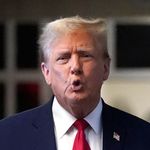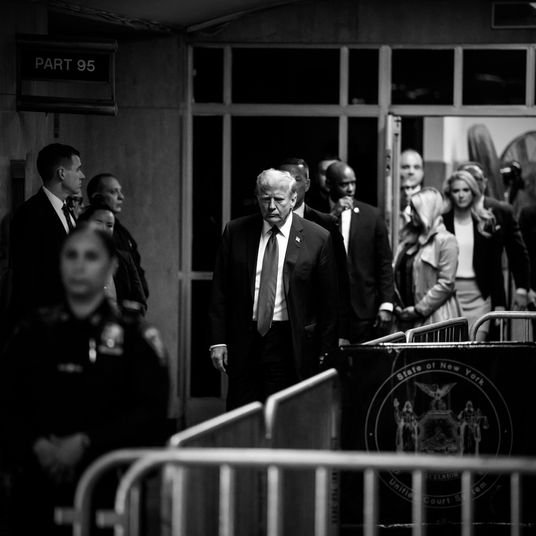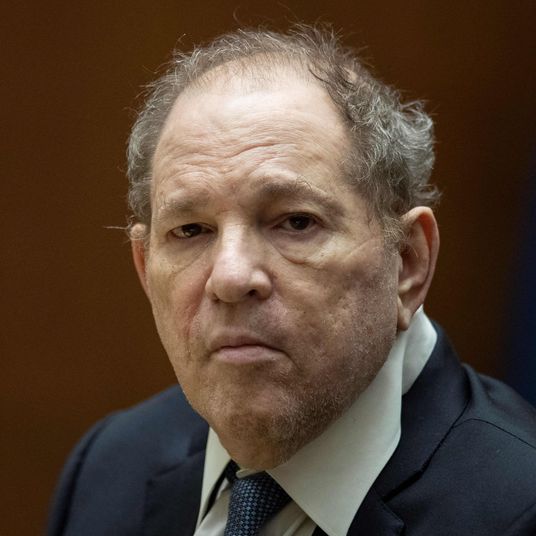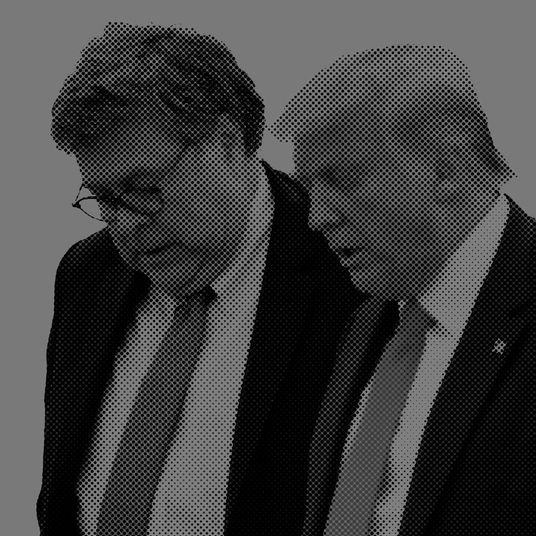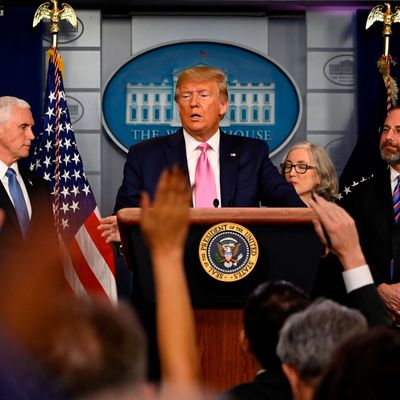
When Nicholson Baker wrote a cover story for New York laying out the evidence that COVID-19 may have originated in a lab in Wuhan, China, the hypothesis was still highly controversial. In the months that have followed, and especially over the last week, it’s gained more and more credibility. A week ago, 18 prominent scientists signed a letter published in Science calling for an open investigation into the virus’s origins. This weekend, the Wall Street Journal reported that U.S. intelligence believes three researchers at the Wuhan Institute of Virology became sick enough in November 2019 to require hospitalization, lending even more credence to the possibility of a lab leak.
The hypothesis is far from proven. But this account of the virus’s origins is highly plausible, and at least as well-grounded as the original story of an infection that naturally leapt from a bat to a person.
This development would come as a shock to anybody who had been following this question in the news, especially its more left-leaning precincts. Many mainstream journalists, though not all, dismissed the lab-leak hypothesis out of hand as a conspiracy theory. In part, they were deceived by some especially voluble public-health experts. In part, they simply took Donald Trump’s bait, answering the former president’s dissembling with false certainty of their own.
It is not too early to grapple with the failures of the media, which reflect the wider struggles of trying to fairly convey the truth in an atmosphere deformed by misinformation. Rather than meet lies with truth, the media often met it with other lies.
The confusion surrounding this issue was sown in no small measure by Trump, who used China as a transparent gambit to distract from his failure to respond to the pandemic. His messages characteristically contained a mix of unproven, false, and irrelevant statements. Trump said China was withholding information about the pandemic’s origins, that it might not have started in a market, and that China may have intentionally started the pandemic or allowed it to spread in order to harm him:
“Whether they made a mistake or whether it started off as a mistake and then they made another one, or did somebody do something on purpose … Certainly it could have been stopped,” Trump said during an event in the East Room on his administration’s efforts to aid seniors during the outbreak. “They either couldn’t do it from a competence standpoint, or they let it spread.”
Obviously, the idea China would intentionally start a deadly pandemic inside of China, just so the virus would eventually spread around the globe and kill Americans, is preposterous. In any case, whether it originated in a lab or a wet market is irrelevant to Trump’s decisions — either way, his job was to protect Americans from the virus, and he failed.
However, the charge that the virus began in a lab and China was covering it up was never clearly false. Yet many media reports treated this aspect with the same skepticism as Trump’s other lies on the subject, often blending different aspects of these claims together.
In January 2020, the Washington Post wrote a story headlined, “Experts debunk fringe theory linking China’s coronavirus to weapons research.” This piece correctly refuted the claim that the virus was deliberately manufactured as a biological weapon. It did not distinguish the (highly unlikely) bioweapon theory from the related, more plausible theory that the disease escaped from the Wuhan lab without ever having been intended as a weapon. More damagingly, this story treated the Wuhan lab’s security as essentially impregnable, asserting that “the Wuhan National Biosafety Laboratory is a ‘Cellular Level Biosafety Level 4’ facility, which means it has a high level of operational security and is authorized to work on dangerous pathogens, including Ebola.”
The security level of a lab in China is not something the Western media was, or is, in a position to assess. But this assumption that the lab almost certainly couldn’t suffer a breach became embedded in a lot of the coverage that followed.
In February, Senator Tom Cotton appeared on television to raise questions about what China was hiding. Cotton kept his exact accusation vague, perhaps deliberately. “We don’t have evidence that this disease originated there,” he said of the Wuhan lab, “but because of China’s duplicity and dishonesty from the beginning, we need to at least ask the question to see what the evidence says, and China right now is not giving evidence on that question at all.”
Reporters immediately began accusing him of promoting the most extreme version of Trump’s charge. The New York Times labeled Cotton’s remarks a “conspiracy theory.” The Washington Post’s account was headlined, “Tom Cotton keeps repeating a coronavirus conspiracy theory that was already debunked.” The Post quoted an expert denying the virus “was a deliberately released bioweapon,” but Cotton hadn’t said that.
Not all media handled the controversy this poorly. The New York Times treated the lab-leak hypothesis as an open question. A report that Trump officials were pressuring intelligence staffers to substantiate the lab-leak theory presented evidence for both sides. Another report a few days later noted, “Some officials who have examined the intelligence reports, which remain classified, say it is possible an animal that was infected with the coronavirus in the laboratory was destroyed, and a lab worker was accidentally infected in the process. But that is just one of many theories still being examined.”
But other reporting spread the same confusion. One April NPR report asserted, “Virus researchers say there is virtually no chance that the new coronavirus was released as result of a laboratory accident in China or anywhere else.” But if you read the story closely, you can see the gaps between what the experts say, and the conclusions of the authorial voice. For instance, one expert explained:
Lim says she does not believe a lab accident is the cause of the current outbreak: “While there is always some risk for lab accidents, risk is not reality,” she told NPR in an email. “The origin of COVID-19 is consistent with other natural zoonotic crossover events, without invoking lab accidents.”
Note that the expert calls contagion a “risk,” without assessing its likelihood, and calls the evidence “consistent with” it having emerged naturally. Neither of these statements rule out the possibility of a lab accident. Yet the report went beyond the evidence to support that different, stronger conclusion.
More liberal news sources went even farther. The Guardian covered the issue through the prism of Trump’s habit of spreading conspiracy theories, with headlines like “Trump fans flames of Chinese lab coronavirus theory during daily briefing” and “Trump claims to have evidence coronavirus started in Chinese lab but offers no details.”
In March, Vox (whose parent company also owns New York) reported, “In some right-wing news outlets and on social media, a dangerous conspiracy theory about the origin of the health crisis won’t die.” It scolded New York Post columnist Steven Mosher for having “stoked the leakage rumor, using an array of circumstantial clues that Chinese labs’ handling of deadly pathogens can’t be trusted,” to which the story asserted in response, “The Wuhan lab has the same safety protocols as top biosafety labs in the US and Europe.”
A Slate story, headlined “Where the Coronavirus Bioweapon Conspiracy Theories Really Come From,” conflated the bioweapon theory with the more modest lab-leak hypothesis:
Responsible outlets have covered the conspiracy theories, attempting to debunk them. But even some experts don’t seem immune here. One rejected the idea of the virus being a biological weapon and praised the Wuhan Institute of Virology as a “world-class research institution that does world-class research” to the Washington Post at the end of January. Less than a month later, he was tweeting sympathetically about a New York Post opinion piece claiming the SARS-CoV-2 virus, the virus that causes COVID-19, had escaped from the same lab
The story proceeds to lay the blame for the lab-leak theory on bigotry: “The rumors of a lab escape or a bioweapon stem from historical amnesia, a caricatured villain, and good old-fashioned racism.” After asserting that China’s lab security is world class, it explains:
Driving these caricatured views, moreover, is an undercurrent of racism. The history of China includes a series of at times violent occupations by English, American, French, and Japanese forces. From this history arises the trope of China as the “sick man of Asia,” an unintentional collaboration between English diplomats and Chinese intellectuals, and made popular more than a century later by, of all people, Bruce Lee, as the South China Morning Post describes. This trope describes the government of China as weak and failing, but also the Chinese people themselves as physically frail. Recently revived by a columnist at the Wall Street Journal, to the anger of the Chinese government, the trope feeds an image of the Chinese as cunning but not intelligent. It’s an odious hang-up from our colonial past, and one we’d be well placed to abandon. It’s worth noting that part of that history includes the use of biological weapons against China by the Japanese—China is the most recent nation to have had bioweapons used against them, en masse, by a foreign power.
Of course, there are sound reasons other than racism to question the security of a lab that has refused to be transparent with international authorities, and whose government is run by an oligarchic one-party state.
The debate over the virus’s origins died down after the spring of 2020, but the original impression as a “conspiracy theory” did not disappear. After a guest on Tucker Carlson’s program called the virus man-made and asserted it had originated in a lab — a hypothesis that, to be clear, was hardly proven — Politifact labelled it a “debunked conspiracy theory.” And yet the same pattern recurred, in which the guts of Politifact’s story failed to support such a confident conclusion, and even conceded it was possible:
That doesn’t rule out the possibility that Chinese researchers were studying the virus in a lab when it managed to spread outside the lab, which is something that the U.S. Defense Intelligence Agency has considered. But the agency has also said there is “no credible evidence to indicate SARS-CoV-2 was released intentionally or was created as a biological weapon.”
Politifact has since appended an editor’s note to the top of that piece retracting its original claim.
In October, Business Insider reported with alarm that a quarter of the public believed a “conspiracy theory” that the virus originated in a lab. But, once again, the story itself merely suggested this was “highly unlikely” (not impossible), due to the Wuhan lab’s stringent safety protocols.
An Associated Press fact-check in December, rounding up various myths related to the pandemic, described the lab-leak hypothesis as a “falsehood.” The story proceeded to assert the virus “likely originated in nature.” Likely, of course, does not mean absolutely.
It is understandable that authorities, including public health experts and journalists, responded to the crisis with initial confusion. But they erred on the side of certainty when they ought to have erred on the side of uncertainty. And the false certainty they embraced at the outset of 2020 hardened into a dogma that they did not question for far too long.
The lab-leak hypothesis may well turn out to be wrong. But that won’t make any of these reports right. The origins of COVID-19 were always hazy, and China’s lack of transparency created significant doubt. Reporters looked at the uncertainty and fell back on an impulse to straightforwardly call out racist lies, even though the evidence to call it lies was quite threadbare.
It is true that most of these outlets were more faithful to the truth than Trump, whose gusher of lies vastly exceeded whatever false claims trickled out of the liberal media. But Trump is not the right standard for journalists. And those who chose to follow the ethos of moral clarity, at the expense of objectivity, misled their audiences.
Chas Danner helped provide research for this column.



